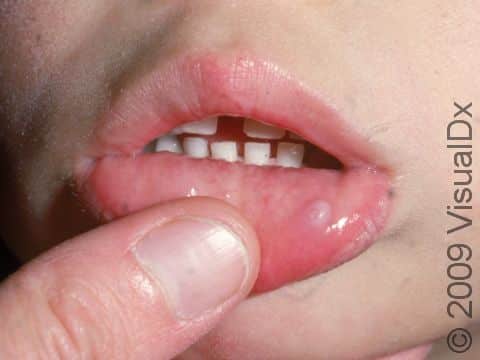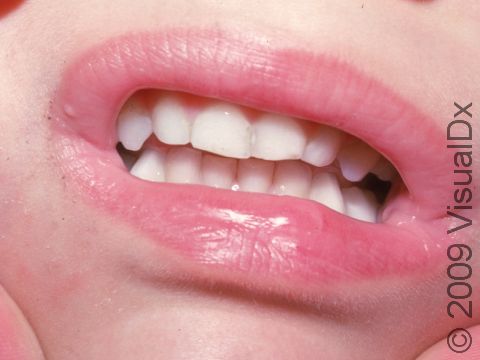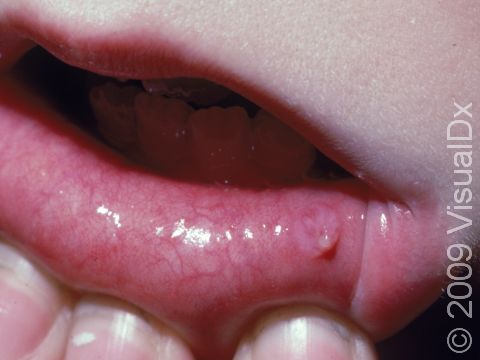Oral Mucocele
An oral mucocele is a harmless, cyst-like (fluid-containing) swelling of the lip or mouth lining (mucosa) due to mucus from the small salivary glands of the mouth leaking into the soft tissue, usually from injury (trauma) or blockage of the gland. Tartar-control toothpaste might be a cause of some mucoceles.
A similar lesion, the mucus-retention cyst, occurs from blockage and backup of saliva in the gland.
Who's At Risk?
Mucoceles occur most commonly in children or young adults. There may be a history of injury or lip biting. The similar-appearing mucus-retention cysts occur more often in older adults and without any history of trauma.
Signs & Symptoms
Mucoceles usually occur on the lower lip and inner part of the cheek, as these are frequent areas of mouth trauma, but they can occur anywhere inside the mouth. A mucocele is usually a single bump with a slightly bluish or normal skin color, varying in size from 1/2 to 1 inch, and it is soft and painless. A mucocele may appear suddenly, while a mucus-retention cyst may slowly enlarge.
Self-Care Guidelines
Many mucoceles will go away on their own in 3–6 weeks. Mucus-retention cysts often last longer. Avoid the habit of chewing or sucking on the lips or cheek.
Treatments
If the doctor is not sure of the diagnosis, a biopsy may be done. Minor surgery may be suggested to remove the lesion.
Visit Urgency
See your child’s doctor if the bump lasts for over 2 months or if it is growing, bleeding, interfering with talking or chewing, or painful.
References
Bolognia, Jean L., ed. Dermatology, pp.1729-1730. New York: Mosby, 2003.
Freedberg, Irwin M., ed. Fitzpatrick’s Dermatology in General Medicine. 6th ed. pp.1087-1088. New York: McGraw-Hill, 2003.
Last modified on August 16th, 2022 at 2:45 pm

Not sure what to look for?
Try our new Rash and Skin Condition Finder


